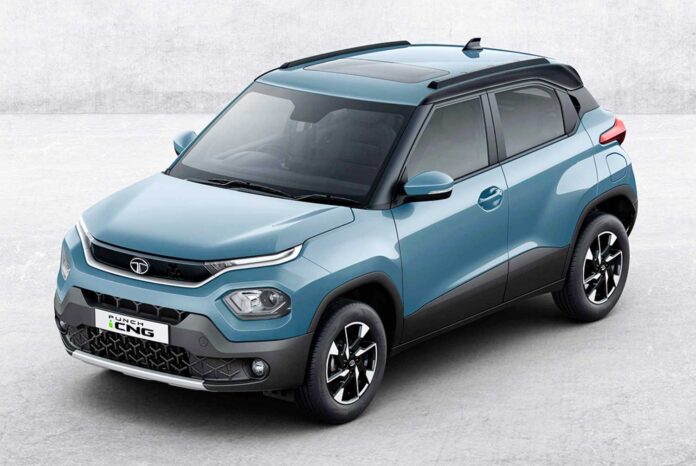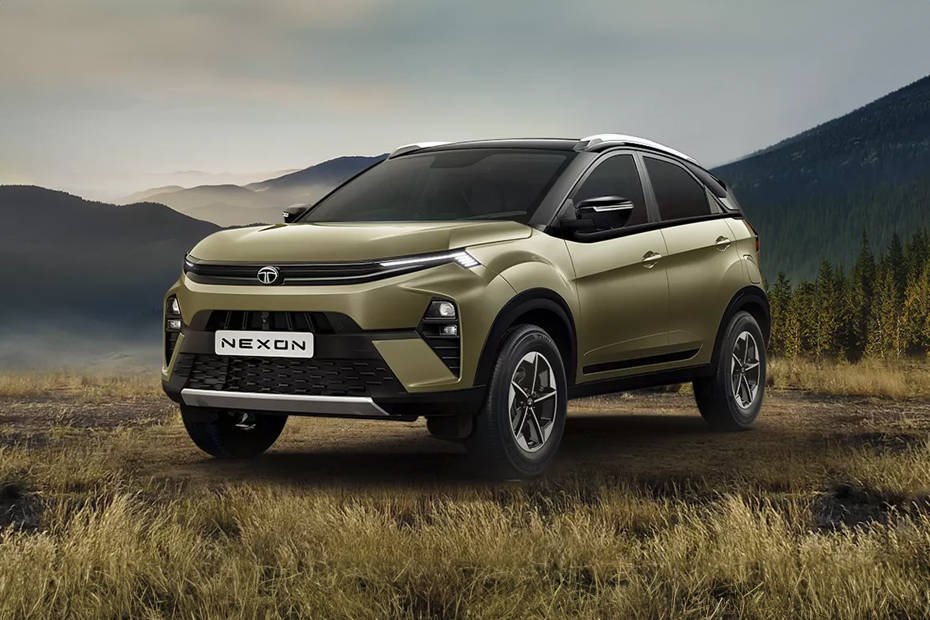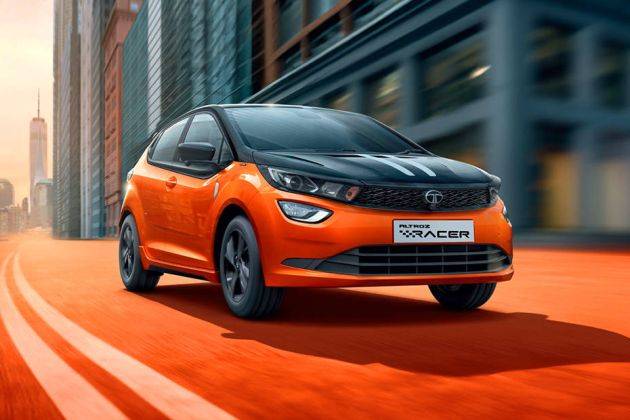Popularity Of CNG Cars On The Rise In India

While EVs may be the long-term eco-friendly solution, as long as internal combustion engines remain relevant, CNG is likely to be the go-to choice for a growing number of car buyers—offering both cost-effectiveness and lower carbon emissions.”
With rising fuel prices and a growing government push against diesel vehicles—especially in metro cities—CNG cars are gaining significant traction in India. Increasingly, customers are opting for CNG over petrol models. According to data from the Society of Indian Automobile Manufacturers (SIAM), CNG vehicles made up 19.5% of car sales in FY2025, a sharp rise from just 6.3% in FY2020—more than tripling their market share in five years. In contrast, petrol car sales have declined notably, with their share dropping from 76.3% in FY2020 to 57.7% in FY2025. Diesel cars, which were already seeing low demand in FY2020, have struggled further post the BS6 transition, with their market share hovering between 17% and 19% since then.
FY2026 is poised to set a new benchmark for CNG car sales, with projections crossing the one-million-unit mark for the first time. This would represent a growth of approximately 20% over FY2025, when over 8.39 lakh CNG vehicles were sold.

The rising demand for CNG cars hasn’t gone unnoticed. Mass-market players like Maruti Suzuki, Tata Motors, and Hyundai are tapping into this growing consumer preference by expanding their CNG line-ups. Between FY2021 and FY2025, the number of available CNG models has more than doubled—from 11 to 25. Automakers are also addressing common drawbacks of CNG vehicles; for instance, Tata Motors and Hyundai now use twin smaller cylinders instead of a single large one to free up boot space. On the infrastructure front, the government is playing its part by accelerating the rollout of CNG stations, with plans to increase the number from 7,400 to 17,500 by 2030.
Maruti Suzuki leads the market with the widest CNG portfolio, offering CNG variants of the Alto, S-Presso, Wagon R, Celerio, Eeco, Swift, Brezza, Dzire, Baleno, Fronx, Ertiga, XL6, and Grand Vitara. Tata Motors, on the other hand, offers CNG options across most of its lineup—Tiago, Tigor, Punch, Altroz, and Nexon—excluding only the Harrier, Safari, and Curvv. However, a CNG version of the Curvv is currently in testing and is expected to launch soon. Hyundai’s CNG offerings remain limited, with just three models: Grand i10 Nios, Aura, and Exter.

Introduction


India’s automobile industry is undergoing a significant transition as sustainability, cost-efficiency, and regulatory changes reshape consumer preferences. While the long-term shift is geared toward electric vehicles (EVs), compressed natural gas (CNG) cars are emerging as a practical and eco-friendlier interim solution for a growing segment of Indian car buyers. Their rising popularity is being driven by a confluence of factors—from soaring fuel prices and favorable government policies to expanding infrastructure and technological innovation by automakers.
Fuel Prices and the Economics of Choice
Fuel costs have always played a pivotal role in influencing vehicle ownership in India. Over the past few years, the sharp rise in petrol and diesel prices has prompted consumers to seek more economical alternatives. CNG has emerged as a viable option due to its significantly lower running cost.
As of 2025, the average running cost of a CNG car is about ₹2.5–3 per kilometer, compared to ₹5–6 for a petrol vehicle. This nearly 50% saving becomes compelling for daily commuters and fleet operators alike. Additionally, CNG prices have remained relatively stable compared to fluctuating crude oil prices, making it a more predictable and budget-friendly option.
Decline of Diesel and Shift in Market Preferences
The government’s growing anti-diesel stance—especially in metro cities—has also played a key role in the shift toward CNG. In the wake of rising concerns over urban air pollution, stricter emissions regulations like Bharat Stage VI (BS6), and the banning of older diesel vehicles in several states, diesel cars have steadily lost favor.
According to data from the Society of Indian Automobile Manufacturers (SIAM), diesel cars had already seen low demand in FY2020, and the BS6 transition that year further eroded their appeal. Their market share has since hovered around 17–19%, while petrol cars, though still dominant, have seen their share drop from 76.3% in FY2020 to 57.7% in FY2025.
CNG cars, in contrast, have seen explosive growth—from a modest 6.3% market share in FY2020 to 19.5% in FY2025. This threefold increase in just five years underscores the rising confidence among consumers in CNG technology and its long-term viability.
Record-Breaking Sales and Future Projections
FY2025 marked a turning point for the CNG segment with over 8.39 lakh units sold. The momentum is expected to continue, with FY2026 projected to be a record-breaking year—sales are anticipated to cross the one-million-unit mark for the first time, reflecting nearly 20% year-on-year growth. This surge highlights how CNG vehicles are no longer just a niche or fleet-focused segment but are becoming a mainstream choice for private buyers as well.
Automakers Respond to Demand
Recognizing this paradigm shift, mass-market carmakers are rapidly expanding their CNG portfolios. Maruti Suzuki, India’s largest car manufacturer, leads the charge with the widest range of CNG models. As of FY2025, its CNG lineup includes:

Entry-level and compact cars: Alto, S-Presso, Wagon R, Celerio
Hatchbacks and sedans: Swift, Dzire, Baleno
MPVs and crossovers: Ertiga, XL6, Grand Vitara, Fronx
Mini-van: Eeco
Compact SUV: Brezza
Tata Motors has also made significant strides. Excluding the Curvv, Harrier, and Safari, its entire lineup now has a CNG option. This includes models like the Tiago, Tigor, Punch, Altroz, and Nexon. The company is currently testing a CNG variant of the Curvv, with a launch expected soon.
Hyundai, though more conservative in this space, offers CNG versions of the Grand i10 Nios, Aura, and the newly introduced Exter. Given the market trend, it’s likely that more models will be added in the near future.
Innovation and Engineering Improvements
One of the historical downsides of CNG vehicles has been compromised boot space due to the bulky fuel cylinder. Automakers are actively addressing this concern. Tata Motors and Hyundai, for example, have introduced models that use two smaller cylinders placed under the floor of the boot, thereby freeing up luggage space and enhancing practicality.
In addition to design innovations, advancements in engine tuning have led to better drivability and fuel efficiency in CNG-powered cars. Dual-fuel technology and intelligent fuel injection systems have also improved performance and reduced emissions, further boosting the appeal of CNG vehicles.
Expanding Infrastructure
A major factor enabling the rise of CNG cars is the rapid expansion of refueling infrastructure across India. As of FY2025, the country has around 7,400 CNG stations, and the government has ambitious plans to more than double this number to 17,500 outlets by 2030. The Ministry of Petroleum and Natural Gas, in collaboration with public and private sector players, is actively working to ensure widespread availability of CNG, even in semi-urban and rural regions.
This infrastructure growth is crucial to eliminating range anxiety among CNG car owners and making the fuel option accessible beyond major cities.

Environmental Benefits and Policy Support
CNG is considered a cleaner alternative to petrol and diesel. It produces significantly lower emissions of nitrogen oxides, particulate matter, and carbon monoxide. The carbon footprint of CNG vehicles is also notably smaller, contributing to India’s broader goals of reducing greenhouse gas emissions and improving urban air quality.
Government policy has been largely supportive, offering incentives for CNG infrastructure development and promoting alternative fuels under initiatives like the National Green Mobility Mission and Faster Adoption and Manufacturing of Hybrid and Electric Vehicles (FAME).
Moreover, states like Delhi, Maharashtra, and Gujarat have introduced policies that encourage the use of CNG vehicles, including lower registration fees, road tax benefits, and subsidies for CNG kit installation.
CNG in Public and Commercial Transport
While private buyers are increasingly considering CNG, the commercial and fleet segments continue to be its backbone. CNG is the preferred fuel for taxis, auto-rickshaws, and delivery vehicles due to its low operating cost and wide availability in urban areas.
Companies like Ola and Uber have also integrated CNG cars into their fleets, citing both economic and environmental benefits. Logistics and e-commerce companies are following suit, converting their fleets to CNG or opting for CNG-powered vehicles from the outset.
Challenges and Limitations
Despite the impressive growth, CNG vehicles are not without challenges:
Limited range: CNG tanks typically offer lower range than petrol or diesel vehicles, which can be a concern for long-distance travelers.
Refueling time and availability: While infrastructure is improving, the refueling process is still longer than petrol or diesel, and queues at CNG stations can be a deterrent in busy cities.
Performance drop: In some models, performance and pickup in CNG mode are still perceived to be lower than in petrol mode.
Initial cost: Factory-fitted CNG variants usually carry a premium over their petrol counterparts, though this is offset over time by lower running costs.
The Road Ahead
Looking forward, the future of CNG cars in India appears promising, particularly as a transitional fuel option until EV infrastructure matures. With automakers introducing more sophisticated CNG variants, better storage solutions, and even turbocharged engines optimized for CNG, consumer apprehensions are likely to diminish further.
Meanwhile, the combination of government incentives, environmental awareness, and cost-conscious consumers will continue to push the demand for CNG vehicles.
Industry analysts predict that CNG could account for up to 25–30% of car sales in India by the end of this decade, especially if the pace of infrastructure expansion and product innovation continues.
READ MORE-CLICK HERE
MORE AT-CLICK HERE
Conclusion
The growing popularity of CNG cars in India reflects a broader shift toward sustainable and cost-effective mobility. While EVs are the future, the present belongs to fuel-efficient alternatives like CNG. Backed by supportive policies, growing infrastructure, and enthusiastic participation from automakers, CNG cars are no longer just a compromise—they are increasingly becoming a smart and sensible choice for the Indian consumer.
FAQs:
1. What is a CNG car?
A CNG (Compressed Natural Gas) car is a vehicle that uses natural gas stored under high pressure as fuel instead of or in addition to petrol or diesel. These cars are typically dual-fuel and can switch between CNG and petrol.
2. Why are CNG cars gaining popularity in India?
CNG cars are becoming more popular due to rising petrol and diesel prices, lower running costs, reduced emissions, and increased government support. They are seen as a cost-effective and eco-friendly alternative to conventional fuel vehicles.
3. How much cheaper is it to run a CNG car compared to a petrol car?
Running a CNG car typically costs around ₹2.5–3 per kilometer, while a petrol car can cost ₹5–6 per kilometer—making CNG vehicles roughly 40–50% cheaper to operate.
4. Are CNG cars safe?
Yes, factory-fitted CNG kits from certified manufacturers are safe. Modern CNG cars come with advanced safety features, including leak detection systems and automatic fuel cut-off in case of an accident.
5. What are the disadvantages of CNG cars?
Limited fuel range compared to petrol/diesel
Longer refueling times
Reduced boot space (though newer designs are addressing this)
Slight drop in engine performance in CNG mode
6. Which car brands offer CNG models in India?
Major brands offering CNG cars include:
Maruti Suzuki (largest lineup)
Tata Motors
Hyundai
Other automakers like Toyota and Kia may also enter the CNG space depending on market demand.
7. Is there enough CNG infrastructure in India?
India is rapidly expanding its CNG network. As of FY2025, there are around 7,400 CNG stations, and the government aims to increase this number to 17,500 by 2030.
8. Are CNG cars better than EVs?
CNG cars are not necessarily better, but they serve as a more accessible and practical option in the short term. EVs are the long-term sustainable solution, but CNG offers lower costs and better availability today, especially for budget-conscious and high-mileage users.
9. Can I install a CNG kit in my existing petrol car?
Yes, aftermarket CNG kits are available, but it’s recommended to opt for factory-fitted kits or certified installations to ensure safety, warranty compliance, and optimal performance.
10. What is the resale value of CNG cars?
CNG cars generally have a good resale value, especially in cities with strong CNG infrastructure. However, resale depends on model, condition, mileage, and local demand.





